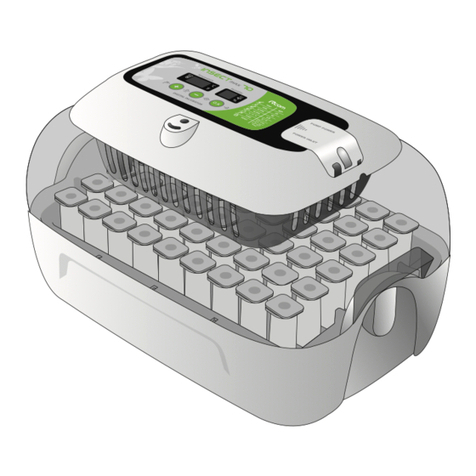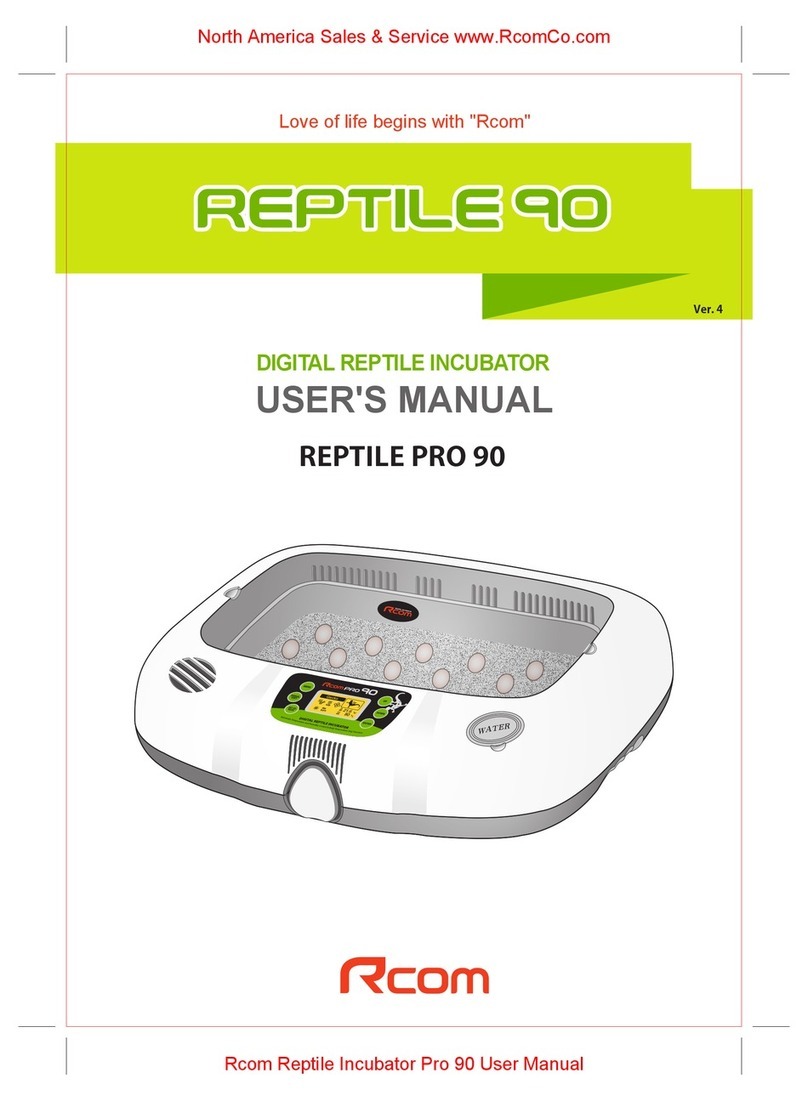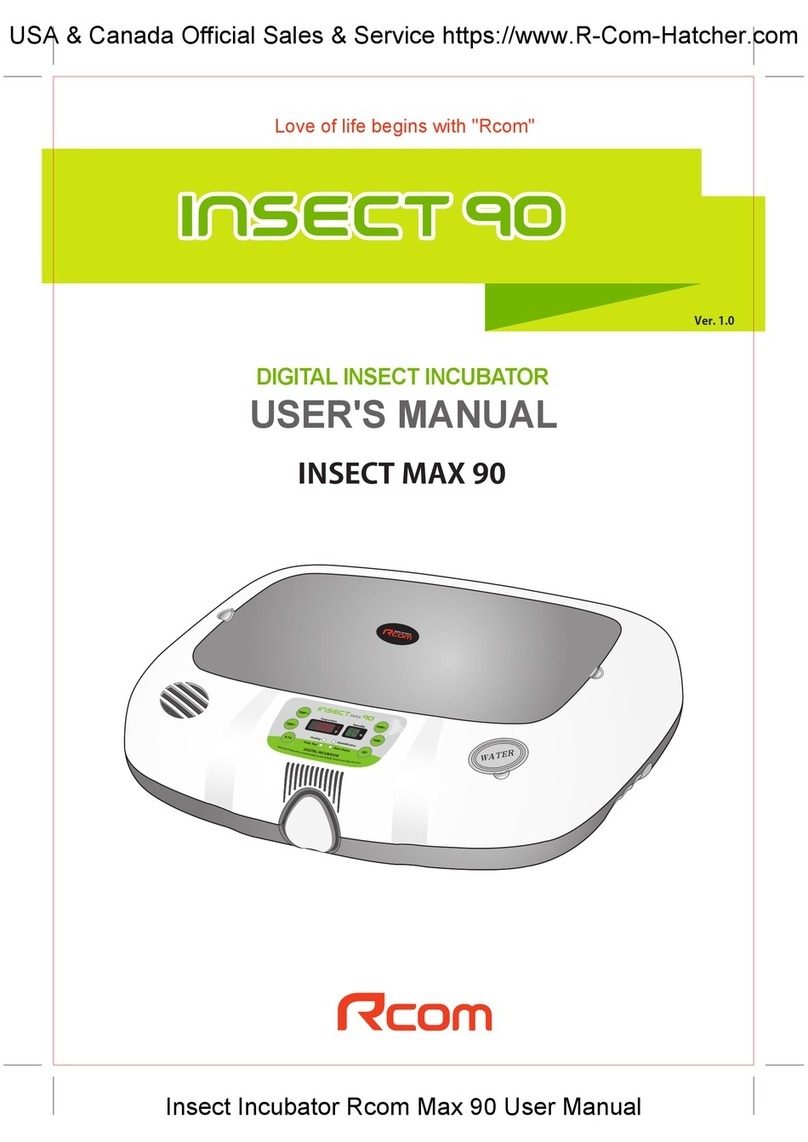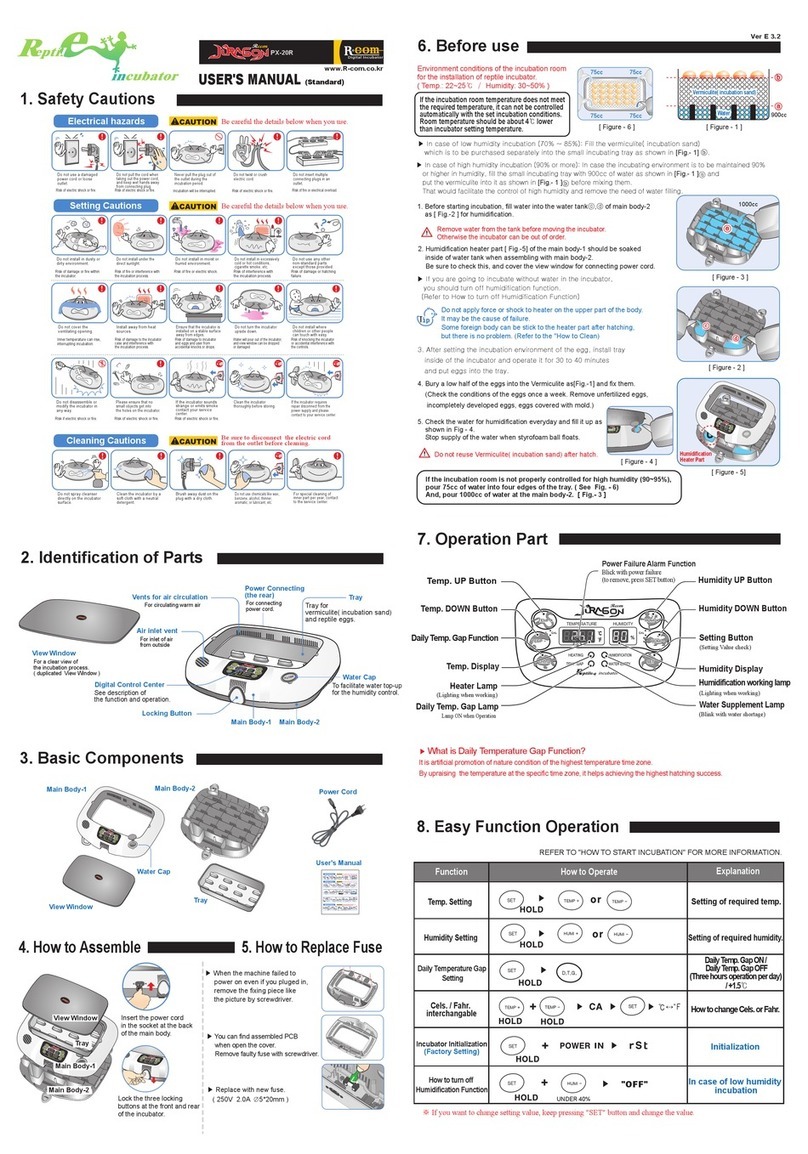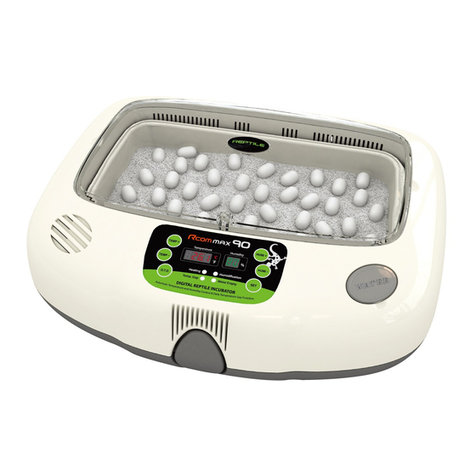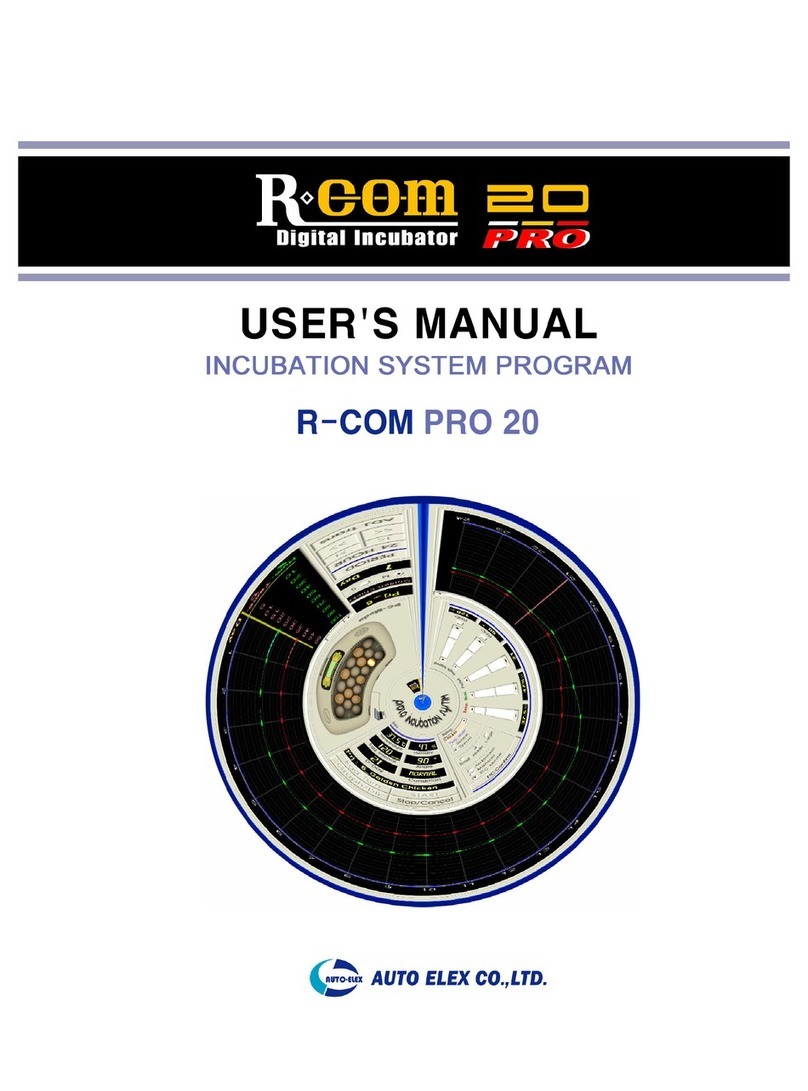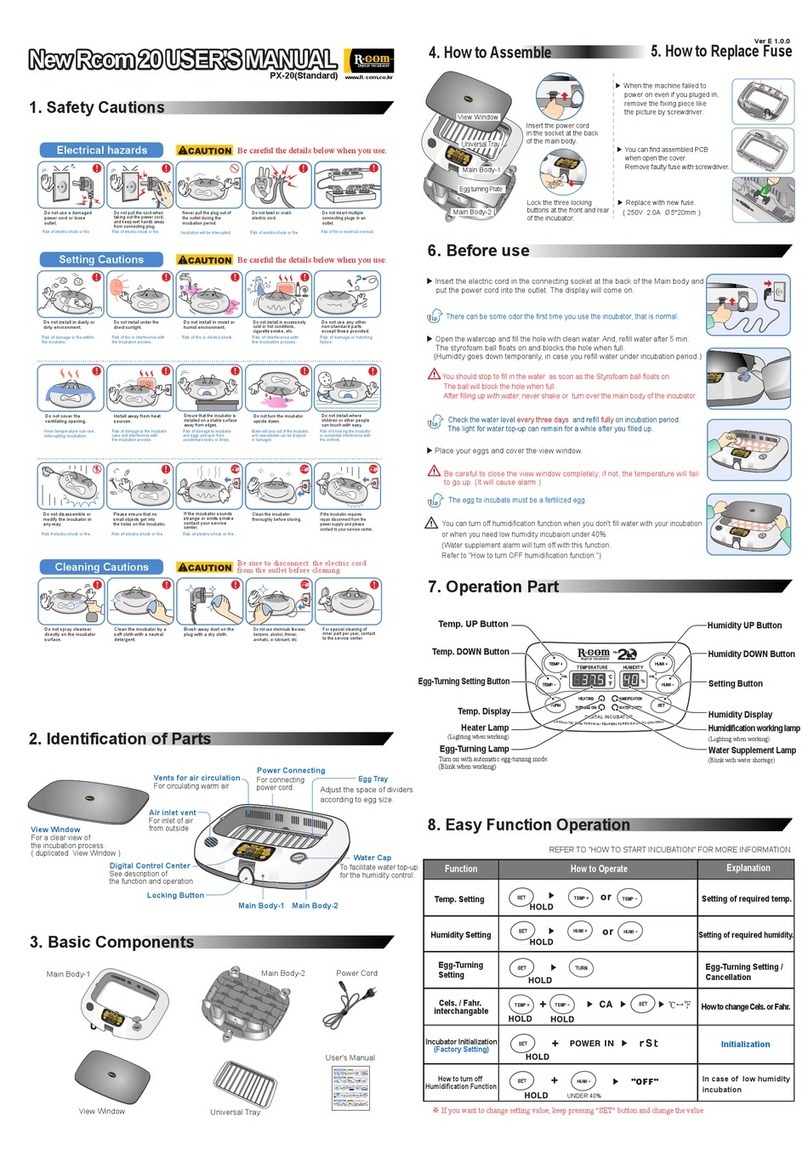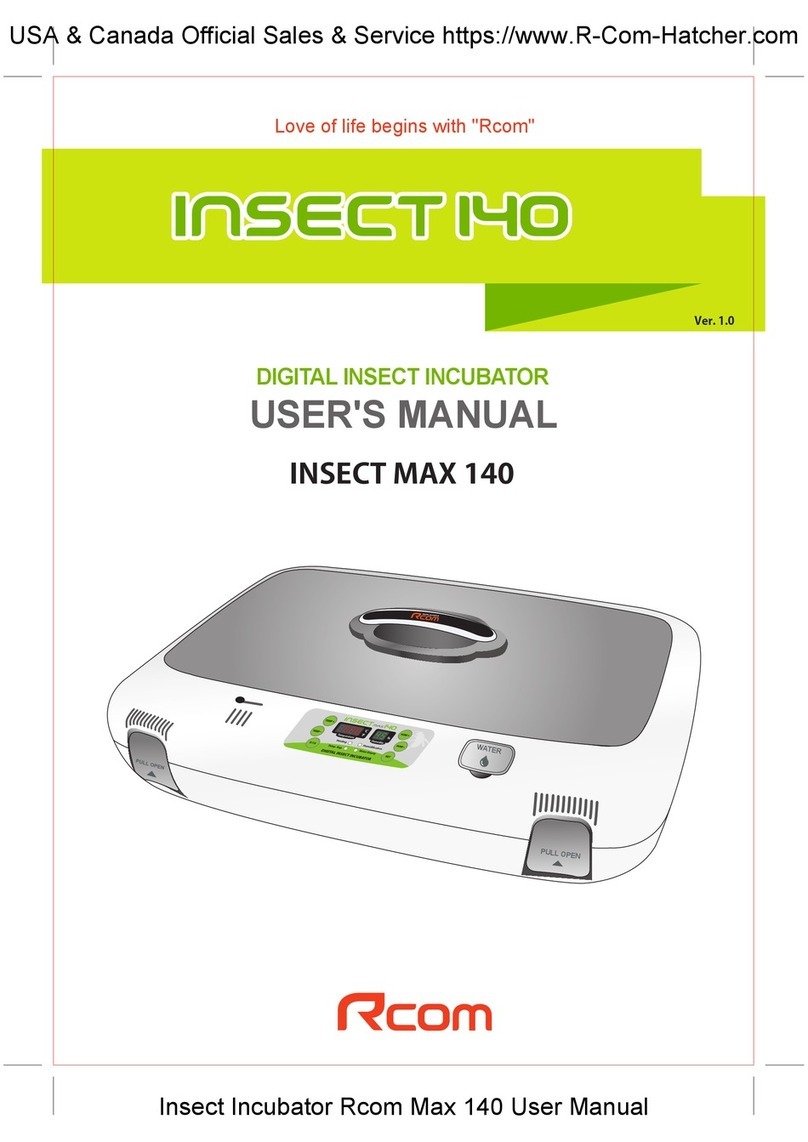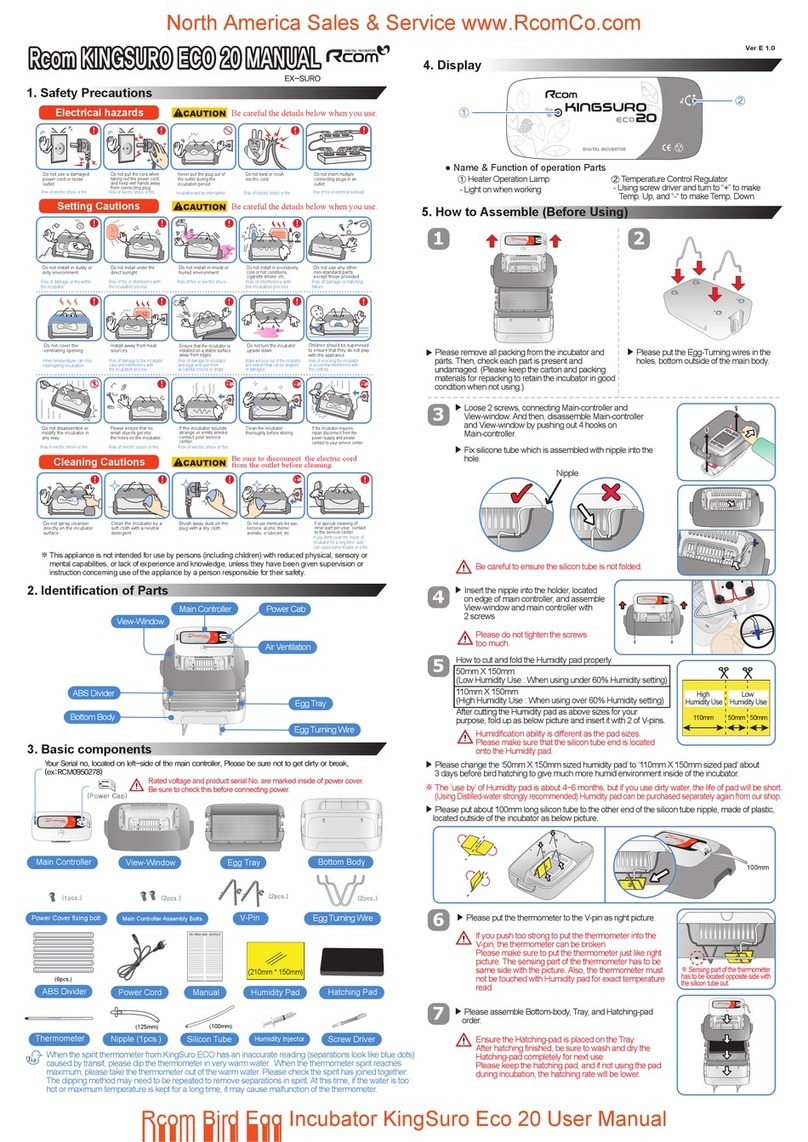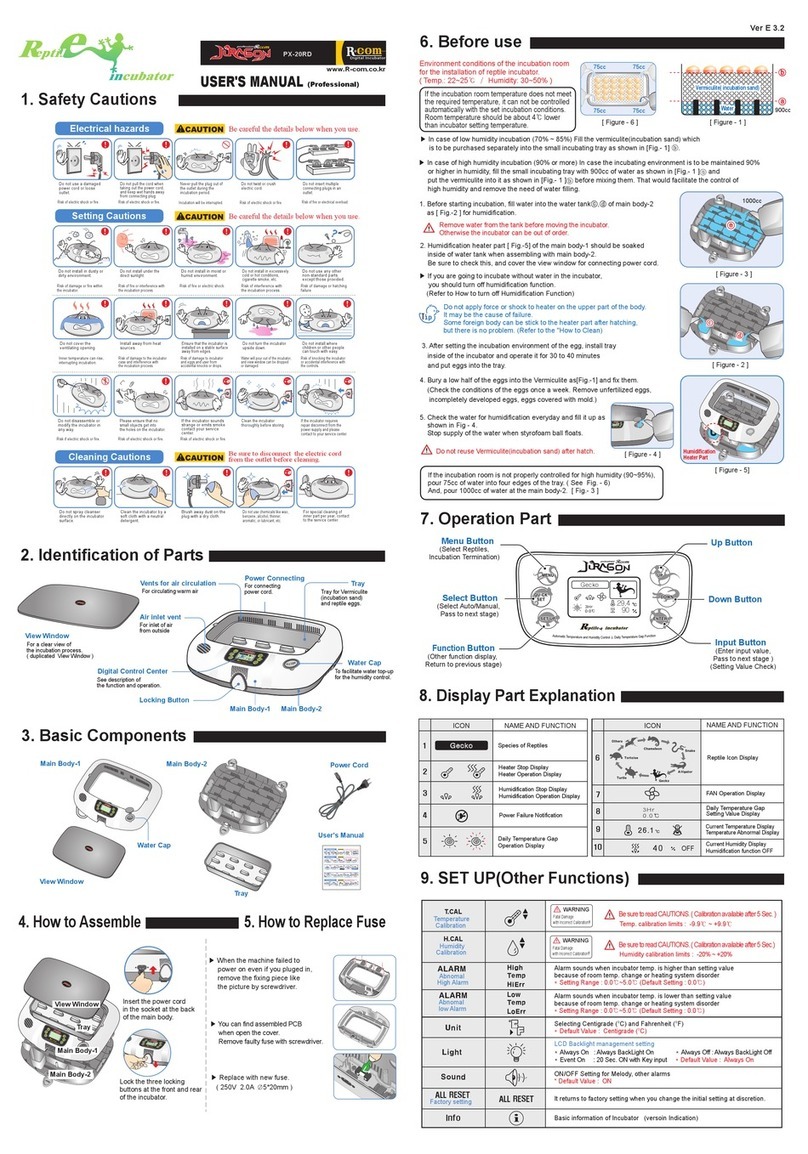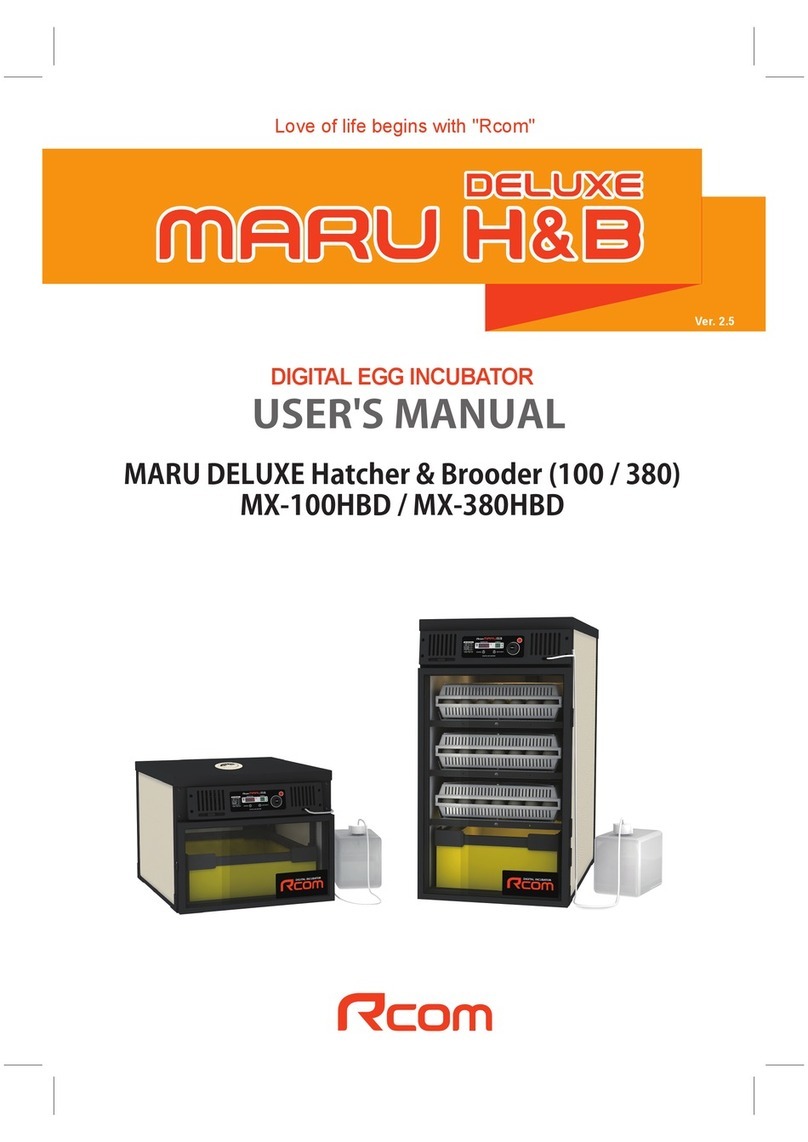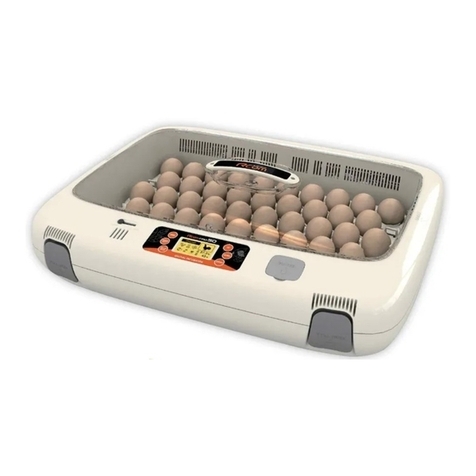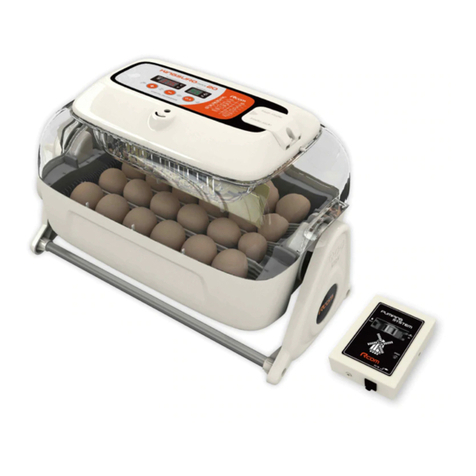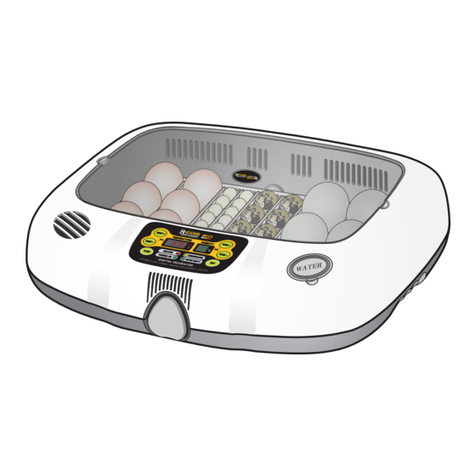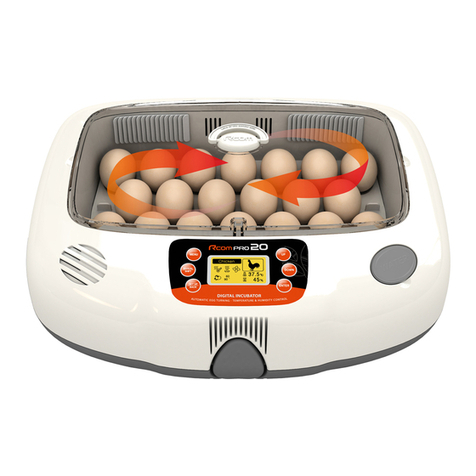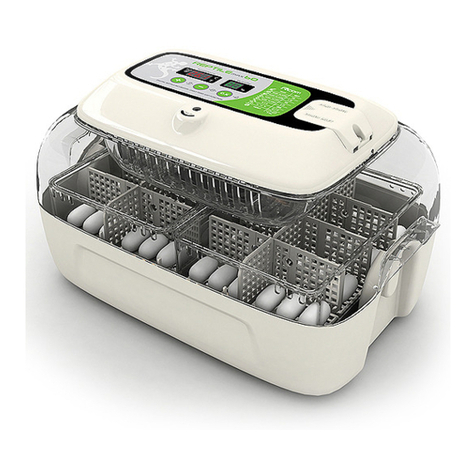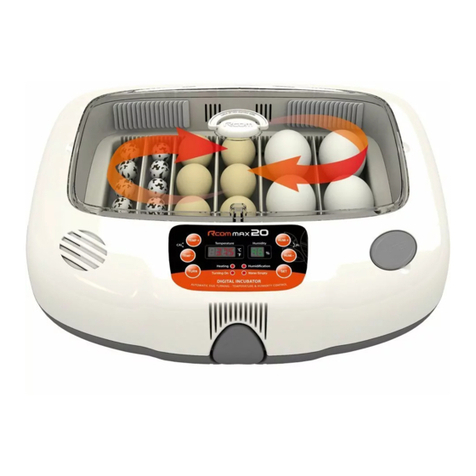
R-COM3_v01_ALL
5
Make sure that the environment the incubator is placed in, is not too humid or wet
Place the incubator on a level and vibration free spot
Place the incubator in a clean and dust free environment
Make sure that children do not have access to the incubator
USAGE
PREPARATIONS FOR USAGE
The following steps have to be followed to make sure that the incubator works correctly.
1. Connect the adapter to the backside of the incubator and connect its plug to a suitable socket. The
LCD/display will light up and will show the temperature of that moment.
ATTENTION: it is possible that during the start-up a normal reaction.
2. Open the cap of the water tank and carefully fill the tank of the incubator with water. During the filling
of the water tank a little Styrofoam spherule will be pushed upwards. As soon as this spherule has
reached the opening of the tank, the tank is full. The water level indication LED will light up
approximately every five days to indicate that the water level in the incubator is too low. If so, refill the
water tank with lukewarm water .
ATTENTION: the water level indication LED will still keep burning for a short time after the tank has
been refilled.
WARNING: after refilling the water tank, do not shake or hold the incubator upside down, as this may
cause a leak or an infiltration and therefore, a short circuit.
3. Open the lid of the incubator and take out the egg tray. Place the fertilized eggs in the grooves and close
the lid.
WARNING: do not throw away the egg tray as you will need it later on during the hatching of the eggs.
WARNING: make sure that the lid of the incubator is closed WELL as, otherwise, the incubator will
not reached the desired temperature.
ATTENTION: the eggs to incubate have to be fertilized.
fertilized? can be found at page 13 of this user guide.
4. Press the <SEL> key of the control panel. The bird symbol on the display will start to flash. Each time
the <SEL> key is pressed again the next species symbol on the display will start flashing.
5. Press as many times as needed the key until you have reached the bird species you want to incubate the
eggs of. Press hereafter approximately for 2 seconds the <OK> key to confirm/save your selection. The
symbol will flash briefly a few times, the light in the incubator will switch on, you will hear a short
beep and the incubator will start running.
6. From this moment on the incubator will optimize automatically all functions. The temperature as well
as the humidity will be kept on a constant level and the eggs will be turned once an hour. Besides all
that, you will hear a beep to warn you each time that the water level in the tank of the incubator is too
low, the lid is open or the temperature is irregular.
Note: a warning signal sounds also 10 seconds before the eggs are turned.
ATTENTION: Why turn the eggs? Turning the eggs is needed until 3 days before the their hatching and
is necessary to get good incubation results and healthier chicks.
